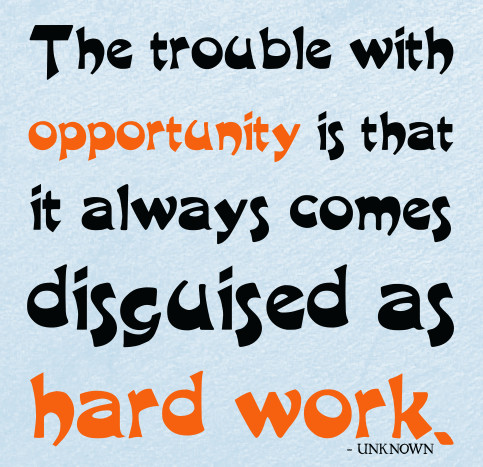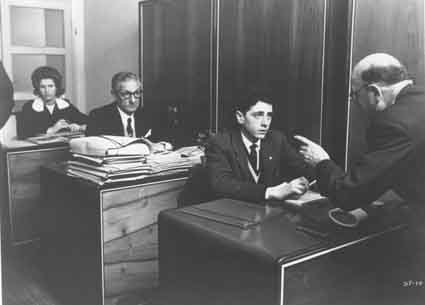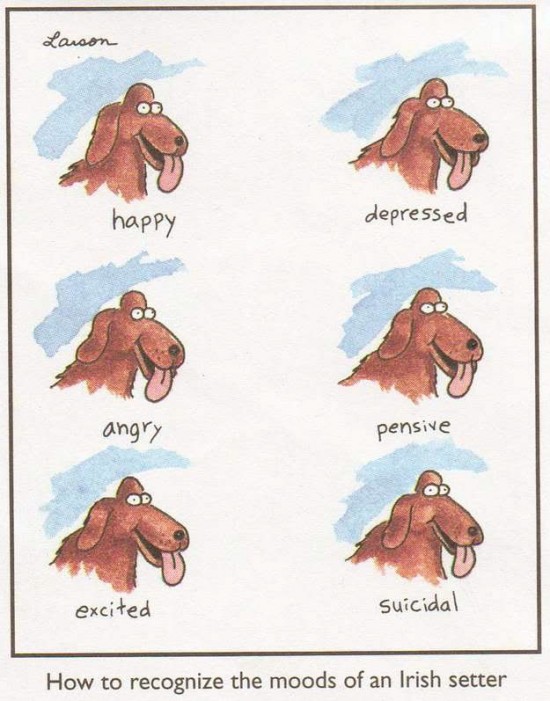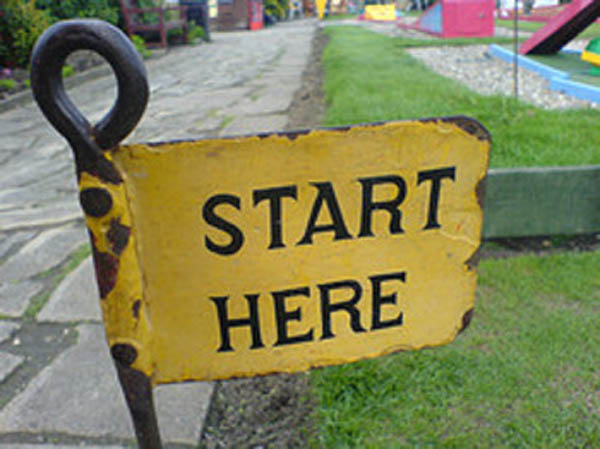
by Jason Owens | Sep 4, 2014 | Self-Employed Sweet Spot
On Tuesday I had a great time meeting Keith Barbee and the fine people of Southwest Rotary in Harrisburg, NC.
I really appreciate the opportunity to share my The State of New Entrepreneur Research talk.
I love my work, and I love sharing what I do.

by Jason Owens | Aug 5, 2014 | Self-Employed Sweet Spot
For new business owners nothing is more critical than cash-flow which keeps you on the constant lookout for sales you can make today.
Yet one of the most important things you can do as a new entrepreneur is to make the decision to build a following in your early days.
Sure, there are people who will do business with you right now because they
- Came to your booth
- Met you at an event
- Really need / want what you offer
But there is a much larger group of people that most business owners completely overlook.
- People who will eventually do business with you if you stay in touch
Let’s call this pool “Eventual Customers”.
These people are like fruit that will ripen in just a little while, they need just a little more time on the windowsill.
The business owners who win over the long term are the ones who
- Recognize the need to nurture these Eventual Customers.
- Do the nurturing that needs to be done.
Why Building a Following Can Be So Hard
What can make this so hard is the continual hunt for customers who want to buy today. If you have set up your entire business around the quick hit, the sale where you happen to be in the right place at the right time, then you’ll most likely miss the value in building a following for future sales.
I’m thinking about one entrepreneur I interviewed earlier. She was the perfect picture of an entrepreneur who was after the quick-hit sale. Her business-to-business day consisted of having at least 10 conversations per day with business owners to get them to sign up for her service.
No interest? No problem. “I’ll be back in this area in 6 months.”
It took some time, but she eventually saw the value in longer-term relationships.
She now openly embraces the Eventual Customers mindset, and has seen huge returns on nurturing followers over the long-term.
How to Get Started
- One of the simplest things to do is to just start collecting people’s information. It is easy enough to do. All you have to do is ask. See Lisa McShane’s example here.
- If you have a booth-based business, then buy a mini clipboard (see this 6″x9″ one from Staples or just Google “mini clipboard”) and place a small sign up sheet. Consider providing a freebie (promotional pen, example of your work, etc.) for signing up.
- Make it a habit of exchanging cards. Yes, this means that you will need to get your own cards printed. See Vistaprint for free cards just to get started.
What This Isn’t
Keep in mind here that you are NOT obligating yourself to starting a website, building a blog or starting some huge social media campaign.
Some business owners make the mistake of investing too heavily in ongoing nurturing. Some feel the need to update their followers every day. For some businesses this can reach overkill quickly.
Building a following is different than building a list, but could certainly lead to that in the future.
What To Do Next
Instead just think about reaching out to people once a month with a short email that says
- Here is what I did last month
- Here are a few of my products / services that are selling well (get yours now)
- Here is what I’m looking forward to next month
You are probably looking at a whopping 10 minutes to write your email, and you’ll become the top of people’s mind.
Here’s a hypothetical example from my training world.
Last week I was in Raleigh, NC with a class of entrepreneurs.
We had a blast figuring out new ways to take our products to market.
My Sales Workshop classes are my biggest seller,
and I can't wait to see you in one of my sessions as I travel
around the state. Next month I'll be in Columbia, SC
teaching my newest class The Inner Roadmap to aspiring entrepreneurs.
In the mean time, if you have any questions about getting
your business started, just hit Reply and I'll do
everything I can to help.
Talk to you soon,
Jason
Feel free to tailor that to your business.
From here you can grow this practice in any one of a thousand ways — a monthly newsletter, a featured-product-of-the-week email, you name it.
Have fun building your following. This is one of the most productive long-term investments you can make in your business.
[reminder]Was this Article Helpful? Please leave me a comment below.[/reminder]

by Jason R Owens | Jul 22, 2013 | Self-Employed Sweet Spot
What it Takes to Succeed Like Nick
Raised as the first generation of his family born on American soil, Nick learned the value of a strong work ethic in his early years. Nick’s father had moved from Greece decades earlier and started a restaurant.
“The best thing my father ever taught me is that success takes time. It was almost 10 years before things really started rolling for him in the restaurant business.”
The restaurant did so well that Nick’s father began moving a few of his brothers to the States from Greece. With extra help the restaurant flourished until there was more than one location. Nick knew he wanted to start his own business, but doing what?
In 2009 he found his answer in paper products — think cups, napkins, straws. This was a perfect leap for Nick since he already new the restaurant business so well.
“It was actually my uncle’s idea. My uncle and my father had this old warehouse, and they let me use part of it for this new business. My cousin and I would work through the day cleaning up the warehouse, fixing the receiving dock, and assembling shelves. Then we would go work at the restaurant in the evenings.”
Not One Business, but Two
As if operating a traditional start-up isn’t enough, Nick still runs his first venture that he started in 2005. Nick was introduced to the Amway business by his best friend while he was in college. Since then he has built a sales team that has reached the Platinum level which is a marker of distinction amongst Amway’s independent business owners.
Nick works the first shift hours in his paper products company, then between 5 and 10 in the evening, he’s working on his Amway business. On occasion, he still helps out the family business by working a few hours a week at the restaurant.
The One Secret
Time and time again I keep running into this same theme as I interview entrepreneurs — hard work. Seems that every successful person I know works really hard to get there. Nick told me about the 12-15 hour days that he logs between his two ventures.
“If you want to be successful, you’ve got to commit; you can’t go into this lukewarm.”
Key Lessons
There are a few key lessons that I want you to grab from Nick’s story.
- Notice that Nick found his passion after he found his product. Passion was discovered through action.
- Go up — In business lingo, Nick’s opening a restaurant supply company is called “vertical integration”. If you already know an industry, consider being a supplier to it.
- Time — This is probably the greatest gift we can give ourselves is the perspective that good organizations and good businesses take time to develop. If you haven’t grown a $1 billion business in 12 months, don’t sweat it.
Best Quote of the Interview
“When you are in business school, no one ever tells you that, as the boss, you get paid last. In my first year in the paper product business there were several months when I went without pay. You’ve got to be mentally prepared for that.”

by Jason R Owens | Jun 27, 2013 | Self-Employed Sweet Spot
Barbara had been working as a CPR instructor for years. She was employed by a fairly well-known healthcare provider and enjoyed her job. She had held numerous positions in the company, but the one thing she liked best was instructing CPR. There were storm clouds on the horizon, however. The company was making major changes in the way that they offered CPR instruction.
“They came to me one day with a choice.”
Barbara could choose to stay with the company as an employee, but she would have a very limited number of days were she actually had the chance to teach. The other option was to become an independent contractor and the company would provide her with ample leads. Barbara and her business partner, one of Barbara’s decades-long co-workers, took the jump together. They decided to form their own business as independent CPR instructors.
When I asked if she ever had any second thoughts during the transition from employee to business owner, she said, “There are a few times when I woke up in the night wondering what I was getting myself into.”
The transition from employee to business owner is daunting for many; however, Barbara and her business partner had several things going in their favor.
- They already knew their craft. Each had more than enough experience in instructing CPR classes.
- They already knew the business. They were familiar with clients and their instruction needs.
- A dependable source of sales leads. Their former employer is a known entity and will be able to supply leads for years to come.
As far as start-ups are concerned this one looks poised for success before they even open their doors. But there is a danger here. There is only one source of leads. When I have seen this same model used in other businesses, it can be quite problematic. Sometimes business owners in these arrangements unknowingly develop a sense of complacency with regard to acquiring new clients. Then one day the phone stops ringing, the source of leads dries up, and the business is left scrambling for revenue. Barbara and her business partner have already addressed this concern, however, by the end of their first year. The business has grown beyond contracting with just their former employer. In fact, they are now contracting with 3 larger firms, and business is booming.
When faced with an opportunity like this, we often have no idea how things are going to work out. The story could have 12 different endings. This start-up story is ending well.
“We each put a bit of money in to get the business started. We started to pay ourselves back a little at a time. Our husbands thought this business was just something that we were playing with.” Barbara had a huge smile on her face when she shared, “Toward the end of the year, my CPA called us and said that we had better go shopping because we were making too much money. I couldn’t believe it. We paid ourselves back and made a profit in our first year!”

by Jason R Owens | Jun 25, 2013 | High Attrition, Self-Employed Sweet Spot
The Real World
Somewhere between adolescence and our mid-20’s we get the message — life isn’t easy.
We aren’t kids any more. School ends and we have bills to pay. We gradually get the message that we are finally in “the real world”, and we don’t expect things to always go our way.
The vital thing that we don’t realize until years later, and this is so subtle that it is practically evil, is the gradual erosion of what we tolerate.
We get into some situation at work and things get a little difficult. Perhaps there are some budget cuts that affect you.
You were counting on more tools to do your job, a new computer this year (finally) to replace the 5-year old model now on your desk. You tighten the belt and continue on.
You get used to it.
This is the new normal. Things are inconvenient but doable.
Then things at work get a little tighter. One of your co-workers leaves for greener pastures and the company decides not to rehire.
That workload now gets shared between the remaining people in your department, including you.
You work a little harder and continue on.
You get used to it.
This is the new normal. This is the way of things, isn’t it? Companies are always looking for ways to be more efficient. Work isn’t supposed to get easier, is it? It’s supposed to get more productive.
Slowly, over time, you notice that any joy that you had for your work is slowly being squeezed away into the push to churn out more units. Something inside seems wrong, but we can’t quite put our finger on it.
You Notice the Tension
You start to develop this groaning sense that work should be different some how. You remember when you used to have time to do quality work, something that you were proud of.
Now, because of workload you just are not comfortable with half of what you have to pass off as “done”. You want things to be just a little bit, and I struggle to find the right word here, better.
Secretly you wish that you just had more time, or more budget. You want the freedom to create. You don’t want to feel like a cog in a machine. You start to feel that life happens to you instead of the other way around.
There has to be a better way somewhere, somehow, right?
Yet, and here is where the tension starts, you feel that sharing these thoughts with your coworkers is dangerous, that you would be derided for being too idealistic, too Pollyanna.
You get visions of some old-school boss saying, “We don’t always get what we want. Work is hard. That’s just the way things are! By the way, the department is going to be working Saturdays for the next few months.”
Choose to Shine!
Some part of us needs to be reminded that you were not created to trudge through life, living small.
You were created to shine.
That tension you are feeling between the work you are doing and the work that you wish you could do probably won’t go away any time soon.
Press into it. See where that desire takes you.
This doesn’t mean that you should quit your job tomorrow, but you should start paying attention to those desires. You were not created to be continually pushed and pressed into a more efficient human machine.

by Jason R Owens | May 19, 2013 | High Attrition, Self-Employed Sweet Spot
How Managing Your Emotions Can Put You Ahead
This Means You
For some of my male readers out there, this article might seem easy to dismiss. The topic of emotions seems just too touchy-feely. Rest assured — this article is for all of us. We are all creatures of emotion. Just look at some of the things that our emotions affect:
- the relationships we form
- the car we choose to drive
- how we feel when someone cuts us off
- the clothes we wear
- what neighborhood we live in
- the employer we choose to work for
- the kind of business we start
- the relationships we choose to end
Emotions and Small Business Owners
Emotions can cause us small business owners to quit long before we should. It is a form of self-sabotage. Unless we break out of these endless circles we’ve created, we are bound to keep our light from the world. We won’t be able to create more jobs, and we won’t be able to help clients with our unique contributions. Here are just a few examples of self-defeating behavior I have witnessed in small business owners:
- You don’t go to the business networking function because they “never amount to anything.” Instead you sit at home under some level of anxiety as you wonder how you are ever going to find the “one thing” that is going to make a difference in your marketing efforts.
- You compare your 2-year old business to Rebecca’s 6-month old business and get the impression she is doing better than you. Afterwords you sulk at home for the rest of the evening wondering why you “just aren’t any good at this.”
- Your competitor’s website makes you feel like you are using finger paint and crayons when you do yours. Then you beat yourself up for not hiring it done. This beating session causes you lost time from wanting to start on the speech you have to give next week.
How to Break the Cycle
Addressing this could take an entire book. Here I’m going to focus only on breaking the cycle of negative self-talk. It takes a certain level of self-awareness to begin the process of keeping yourself in good head space. Here’s the simple test I use.
Pick a thought or a feeling you are having right now about your business. Ask yourself this question:
Is what I am thinking right now making me feel better or worse about myself?
Just follow the thought for a moment and you will become very aware of where it is leading you. If the thought is building you up and making you feel more confident about where you are, then you are in good shape. If the thought is wearing you down and making you feel diminished, then it is time to get it out of your head. Time to give yourself a mental reboot. I have literally developed the habit of not dwelling on things.
No Longer a Dweller
In the past I used to get really worked up about things that were not going according to my plan, which means I was worked up most of the time. I spent so much time on “if only”, “what if”, and “woulda, shoulda, coulda” that I nearly dwelled myself into exhaustion. I was spinning my wheels yet going nowhere. It took me a LONG time to realize how much time I was wasting. What’s worse is that dwelling is a double whammy. Dwelling usually puts you in an emotional hole that you have to climb from, AND it keeps you from spending time on reaching your goals.
The Payoff
Managing your emotions means that you stop losing time. You are not digging your self a hole that takes time to fill. Managing your emotions means that you believe in yourself. You care enough about yourself to invest only the best thoughts and feelings.
Remember this: If you wouldn’t let someone else treat you badly, then don’t treat yourself badly.

by Jason R Owens | May 18, 2013 | Self-Employed Sweet Spot
Small Business Startups & Time Management
You have made the commitment. You decided to start your own business. You may have left a full-time job and decided to jump in full tilt, or you may have decided to start a pet project on the side. You are truly taking your first steps into a greater world. It is perfectly normal at this point to get overwhelmed with what to do next.
You could spend your time on any of the following:
- Getting business cards printed
- Putting up your web site
- Designing a Facebook ad
- Writing a newsletter
- Going to a networking meeting
- Buying office supplies
- Figuring out why your printer stopped working
The list seems endless. This is the very area where I have seen many a business owner get overwhelmed. “I’m just not getting enough stuff done!”
Forget Discouragement
The reason I bring up time management is because it is such a self-defeating topic. I have not met a single person who feels they are accomplishing enough with their time. This even includes the workaholics. Time management is a deep pit with no bottom, a chasing after the horizon. No matter how hard you try, there is always more you could have done. “I should have put in a little more effort. If I was thinking straight I could have spent less time by going through the drive-thru.” You see? It never ends.
Instead of managing your time, manage your emotions.
How I Prioritize my Day
I have two rules of thumb that help me prioritize what I do
- Of all the items on my To-Do list, which ones are most likely to help me get the next sale?
- See number 1.
Once I apply this filter to my world, I can see clearly what opportunities make the most sense to pursue and what opportunities fit in that “nice to have” category. Why is Sales my most important category? Because it keeps me alive. It puts bread on the table and gives me the chance to do this business for one more day. Selling tells me that I have a product the market wants, and gives me the chance to help more and more people. When my Sales are in check, my emotions are in check. When sales go in the tank, my mind starts thinking of all kinds of reasons to quit, and my negative self-talk kicks in. “You should have stayed at your desk job, Jason.”
Biggest Time Wasters (and Emotion Eaters)
For most people I think the biggest time waster has to be troubleshooting some type of technical problem.
- People might complain about not getting emails that you know you have sent.
- Your computer is running slowly and you’ve already run the super extensive virus scan 5 times in the past week.
- Finding just the right font for your blog.
If technology just isn’t your thing, find a way to delegate these situations to one of your suppliers. Yes, hire someone to do this. You probably won’t like the price, but here’s what you gain:
- You don’t have to beat up yourself for making the wrong choice. “If had had picked Gmail instead of this second rate email system, I wouldn’t be having this problem.
- You get to focus on what you do best, which boosts your confidence and allows you to produce great work.

by Jason R Owens | May 17, 2013 | Self-Employed Sweet Spot
The Best Way Small Business Owners Can Generate Immediate Revenue
Say you just lost your largest client, or you want to get your new business off to a great start.
The point is that you want (need) new revenue quickly.
Here’s how to get it.
This is going to take a bit of moxy — you will need to get out of your shell to do this face-to-face.
Get out in your community right now. I’m not talking about a networking meeting. Attending a typical networking meeting can work quite well over the longer term, however, they are not a feast of grab-and-go revenue.
Instead, start visiting businesses. Go to a business park and open every door that you can find. Yes, I am serious. The front doors are typically unlocked, and there is usually someone there who can help you. I did this recently with a client and was amazed to see how many times the person behind the front desk said things such as, “Your timing is pretty good. We were just talking about this yesterday.” This door-to-door tactic works well if you sell to other businesses AND for those of you who sell directly to consumers.
Just last week I visited with a new food business that was just at the first few weeks of getting launched. The owners were flying high from just having canvassed their business park. “We just got finished going door-to-door collecting names of people here who might be interested in our sandwiches. We send out an email in the morning telling them about our special of the day. They reply telling us how many they want.” When I visited only 4 days later they were counting a stack of cash from sales to the very people they had signed up.
Want to know what other business should do door-to-door canvassing? Dog trainers! I was surprised to see how many people take their dogs to work. Sometimes the dog greeted us before the owners did.
If things are running tight, and you need the extra boost to get over the mental defeat of loosing a big client, do not expect to get over the hump while hiding behind email. Sure, I like doing business via email as much as anyone else, but it is hard to establish new, solid relationships this way. My motto is “Establish relationships face-to-face; Maintain them electronically.

by Jason R Owens | Apr 29, 2013 | Self-Employed Sweet Spot
The setbacks you expeirence when chasing your dreams are perhaps the most painful of all. Let’s face it. We’ve all blown it at times. We’ve made a bad choice, a wrong turn or stepped in a hole we didn’t see. But some mistakes just hurt more than others.
Compare these two
- You get home from a long trip to the grocery store and realize that you bought 2% milk instead of skim.
- You submitted two of your best paintings to be entered in a local art show. Both get rejected.
Which setback stings more? The second one, of course. There is a lot more of a person’s heart (and personal identity) wrapped up in their work. Art is a form of self expression. For that matter, any act of chasing a dream, following your passion or starting a business is a form of self-expression.
Let’s continue with the artist scenario for a moment. What is likely to happen here? It would be really easy for the artist to catastrophize, to assume that this is the end, to think that she does not have any real talent. The artist may begin to feel that she should give up painting in favor of getting “a real” job. She may go throught the cycle of despair. A business owner who has suffered a similar defeat may end up back in a cubicle, never to try self-employment again.
What if there were a better way? What if we could reframe our missetps so that we could see them in their proper light? What if we could start to see oursleves in the proper light?
Failure isn’t failure.
In over a dozen years of chasing my passion (to own my own business) I have never had one single person tell me what I am about to tell you — you are probably not going to get it right the first time. In fact, there are very few who do.
You are probably not going to get it right the first time; there are very few who do.
What took me years to learn is that it really is ok to fall down, to make bad choices. You see, I had placed a phenomenal amount of pressure on myself to figure out all the answers on my own. I didn’t have money to hire a coach for everything, and I certainly didn’t have time to take classes every time I felt I didn’t know enough.
I also had to learn NOT to beat myself up when something didn’t work. While my heart was completely in my work, I was not doing a good job of guarding my heart from defeat. I took it pretty hard. With each defeat I found myself rethinking and re-evaluating my place in life.
- “Is this not my calling?”
- “Am I really not any good at this?”
- “Is God trying to tell me something?”
I was in my own spin cycle. My confidence would go in the tank, and I had to start over every time I made a misstep. I had to recommit to somehow finding a way that I could own my own business. It was only after going through this emotional spin cycle that I realized most successful entrepreneurs I know landed in their space only after several tries. Some even discovered their current niche while diligently working on something else. I had to find a way to stop myself from entering the spin cycle.
For most of you out there who are chasing your dream, at some point you will have to embrace self-promotion in the form of marketing and selling your goods. This is true of artists, writers, church planters, dog trainers and hundreds of other professions. If you have never…
- been in a formal sales role
- done a fair amount of public speaking
- had experience in marketing
…there is a lot to learn. It just isn’t reasonable to think that you will get all this right the first time, so take it easy on yourself.
A Life-Long Pursuit
Chasing your passion and realizing your dreams is a life-long pursuit. You have to be in this for the long haul. For some of us, this journey takes months. For the rest of us, like me, it takes years.
Failure isn’t failure if
- You are able to take the knowledge and experience with you to use next time.
- You commit that there will be a next time.
- You’ve made the conscious decision NOT to beat yourself up for taking the risk.
When you are able to keep your heart intact after a setback, it completely changes what you can accomplish.
Four Things You Can Do
Here are 4 things you can do to ensure that failure isn’t failure.
- Remind yourself that you had the guts to go for it when so many others would not.
- Remember, or even write down, all the times when you did win. Especially the times when someone paid you for your product or service.
- Start a file on the compliments you received on your journey. This includes Facebook comments, emails, recommendations you received on LinkedIn, etc. Print them and put them in a folder. These are proof that you can do good work, work that people love. Refer back to this folder when you need a boost in the future.
- Take a few minutes to write down what you would do differently. Would you advertise more? To a different audience? Would you choose a different location for your business? Was your offer compelling? Do you feel that people “get” you? Are enough people coming into your booth or website?

by Jason R Owens | Apr 26, 2013 | Self-Employed Sweet Spot
Mastering Your Journey at Any Age
Michael Hyatt wrote a review on Jon Acuff’s new book titled Start. In Michael’s review he called out 5 major phases we all go through in our, as Jon calls it, road to awesome. The steps are as follows:
- Learning
- Editing
- Mastering
- Harvesting
- Guiding
What struck me most about the review is that Jon does not appear to link these steps to a person’s age. The old maxim “Learn in your 20’s and earn in your 30’s” is out of date according to Acuff.
This breaks the tradition that those who have not found their way by a certain stage in life are doomed to obscurity.
What I find refreshing about Jon’s admonition and Michael’s ensuing comments is that learning can happen in one’s 60’s just as easily as it can in one’s 20’s. The same goes for all the other steps including Harvesting. So, for those of you who feel that life has beaten you down, or that you are in a continual loop of learning and editing without ever reaching the harvesting stage, let those chains of “I’m never going to make it” fall away. You can achieve success.
Another thing that struck me about Hyatt’s review is the comment section beneath the article. There are dozens and dozens of comments from people who describe being in the Learning, Editing and Mastering phases. Lots of people who are just starting out. Many who are restarting after failure or setbacks. Read through these posts and you will see where people report:
- “I’m now 61 years old…”
- “I decided to go back to school at 62.”
- “I’m now 36 and undergoing a complete career change.”
- “…I think I’ll start over at 50…”
- “At the beginning of my 40’s I am filtering out the fluff…”
- “I turned 40 this year.”
Most of these respondents really resonated with the Editing and Mastering phases of the journey. There are a LOT of us out here who are trying new things, learning, willing to take risk, and willing to keep at it to reach Mastery.









